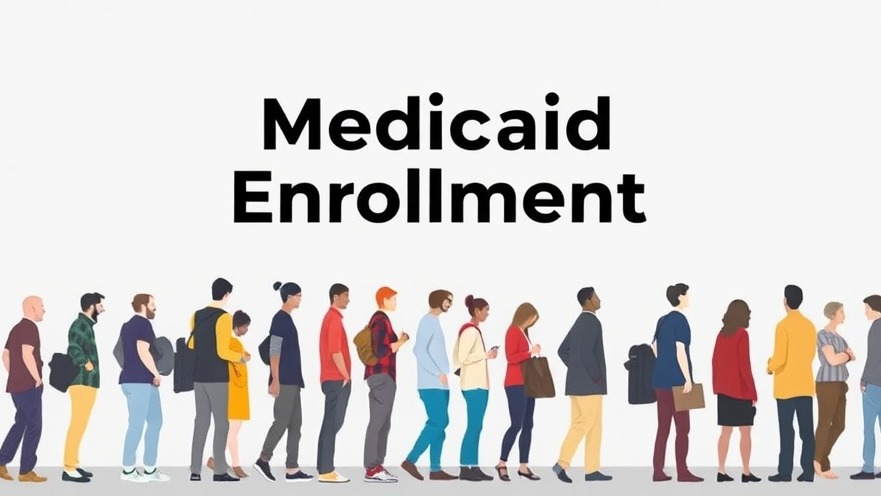
Understanding the Evolution of Medicaid Enrollment
The Medicaid Enrollment and Unwinding Tracker provides vital statistics regarding the shifts in Medicaid and CHIP (Children's Health Insurance Program) enrollment, particularly in the context of the COVID-19 pandemic. Tracking began during the pandemic, when an unprecedented continuous enrollment provision was established to protect vulnerable populations from disenrollment. This historical backdrop sets the stage for understanding enrollment trends that have emerged in recent years.
The Impact of the Pandemic on Medicaid Enrollment
Before March 2023, Medicaid enrollment hit a high of 94 million individuals, influenced by the pandemic's effects and the subsequent implementation of provisions that staved off disenrollment. As we transitioned to a post-pandemic landscape, states resumed their regular eligibility verification processes, leading to significant changes in enrollment numbers. By March 2025, approximately 78.6 million individuals remained enrolled, reflecting a notable decline (17 percent) from the previous year.
State-Specific Trends in Medicaid Enrollment
Enrollment patterns vary dramatically by state. While some states like North Carolina saw as much as a 53 percent increase in Medicaid enrollment since pre-pandemic figures, others, such as Montana, experienced a decrease of 17 percent. Such discrepancies can be attributed to various factors, including state-level decisions on Medicaid expansion and eligibility. For instance, states like Nebraska and North Carolina expanded Medicaid to cover more low-income residents, significantly boosting enrollment.
Renewal Processes and Their Effectiveness
The unwinding process also unveiled the effectiveness of states in maintaining eligibility among current Medicaid recipients. Many states improved renewal processes, ensuring that fewer eligible individuals fell through the cracks during the transition back to traditional enrollment practices. This deliberate effort to enhance administrative processes likely prevented further disenrollment.
The Link Between Health Policies and Community Wellbeing
For suburban professionals, understanding these enrollment trends is not just statistical; it relates directly to community health and wellness. Medicaid, as a safety net, plays a crucial role in determining access to healthcare resources for low-income populations. The choices made by policymakers at state and federal levels directly affect wellness outcomes and can influence public health metrics critical for suburban communities.
Future Predictions: Navigating the Unwind
Looking ahead, the ongoing adjustment following the unwinding of the continuous enrollment period poses both opportunities and risks for health policies and community health initiatives. Policymakers must balance fiscal constraints with the imperative to support the health needs of their populations. Failure to navigate this landscape effectively may result in negative ramifications for health access and equity.
Action Steps for Informed Advocacy
For those concerned about health and wellness in their communities, it’s essential to stay informed about Medicaid developments and advocate for effective policies that ensure reliable healthcare access. Engaging with local health initiatives and understanding enrollment changes not only empowers individuals but strengthens community resilience.
As suburban professionals invested in health and wellness trends, being proactive about these shifts is paramount. Stay informed, get involved, and advocate for policies that safeguard health access for all community members seeking fitness and wellness.
In summary, as Medicaid enrollment continues to evolve post-pandemic, understanding these trends enables professionals to engage with pressing health issues strategically. Through informed advocacy and community connection, we can collectively navigate the complexities of health and wellness policies.
 Add Row
Add Row  Add
Add 




 Add Row
Add Row  Add
Add 

Write A Comment